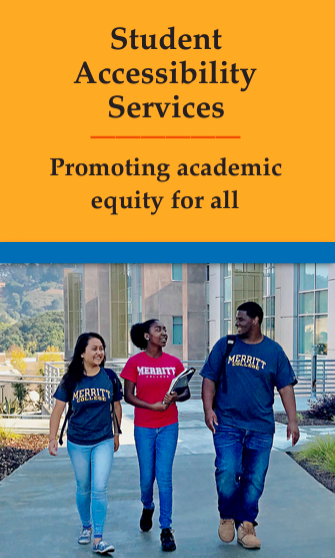A variety of orthopedic/mobility related disabilities result from congenital conditions, accidents, or progressive neuro-muscular diseases. These disabilities include conditions such as spinal cord injury, cerebral palsy, amputation, muscular dystrophy, cardiac conditions, cystic fibrosis, paralysis, polio/post-polio and stroke. Functional limitations and abilities vary widely even within one group of disabilities. Mobility impairments include students using wheelchairs, crutches, braces, walkers, or canes; however, not all students with mobility impairments require mobility aids.
Definition:
• Physical Disability – Visual, mobility, orthopedic or other health impairment
• Mobility and Orthopedic – A serious limitation in locomotion or motion functions which indicate a need for services
• Other Health Impairment – A serious dysfunction of a body part or system which necessitates the use of one or more services
Accessibility:
If it seems that a student may have to miss a special meeting, conference with you, or other such event because of an inaccessible location, please move your conference or meeting to an accessible location, if possible.
Lateness and Absences:
Students with mobility impairments may also require more time to get to and from classes because the accessible travel routes are sometimes round about; they are dependent on the elevators being in operating order, and they have more difficulty making up for time lost when an earlier class is held overtime. Other reasons for these students occasionally being late are waiting for assistance in opening doors, and maneuvering along crowded paths and corridors. If a student who uses a wheelchair or has another mobility related disability is frequently late, it is, of course, appropriate to discuss the situation with him/her and seek solutions. Most students will schedule their classes with ample time between them; however this is not always possible. Students who rely on attendant care or mobility assistance may sometimes experience disruption in their schedules that are beyond their control.
Some students are susceptible to physical problems which can require them to be absent during a prolonged course of medical treatment. If this occurs, understanding is appreciated. The student is responsible for notifying his or her instructor of the situation. Some individuals with mobility impairments have disabilities that involve unavoidable personal hygiene problems that may cause them to be absent from class without advance notice. Such problems occur infrequently, but should be given due consideration by faculty members.
Field Trips:
If a class involves field work or field trips, ask the student to participate in the selection of sites and modes of transportation. Students are not “confined” to wheelchairs. They often transfer to automobiles and to furniture. Some who use wheelchairs can walk with the aid of canes, braces, crutches, or walkers. Special arrangements will have to be made for field trips when students have difficulty transferring from wheelchair to other vehicles.
Classroom Considerations:
Classes taught in laboratory settings will usually require some modification of the work station. Considerations include under counter knee clearance, working counter top height, horizontal working reach, and aisle widths. Working directly with the student may be the best way to provide modifications to the work station. Those students, who may not be able to participate in a laboratory class without the assistance of an aide, should be allowed to benefit from the actual lab work to the fullest extent. The student can give all instructions to an aide from what chemical to add to what type of test tube to use to where to dispose of used chemicals. The student will learn everything except the physical manipulation of the chemicals.
Classes in physical education and recreation can almost always be modified so that the student in a wheelchair can participate. Classmates are usually more than willing to assist, if necessary. Most students who use wheelchairs do not get enough physical exercise in daily activity, so it is particularly important that they be encouraged, as well as provided with the opportunity, to participate.
Other Tips:
• Most students who use wheelchairs will ask for assistance if they need it. Do not assume automatically that assistance is required. Offer assistance if you wish, but do not insist, and be willing to accept a “No, thank you.” graciously.
• A wheelchair is part of the person’s body space. Do not automatically lean on the chair; it is similar to hanging or leaning on the person.
• When talking to a student in a wheelchair for more than a few minutes, sit down if possible.
• Because a student sitting in a wheelchair is about as tall as most children, and because a pat on the head is often used to express affection toward children, many people are inclined to reach out and pat the person in a wheelchair on the head. These students usually find this to be demeaning.
Possible Accommodations:
Academic support
Adaptive equipment
• Alternative testing (extended time, reader, scribe, distraction reduced setting, and/or computer)
• Note-taking assistance
To arrange for an appointment with a DSP Counselor:
Download the Disability Verification Form.
• Fill it out.
• Call 510-436-2429 or drop by R-109 to make an appointment.
• Bring completed form to your appointment.
• Bring supporting documentation on disabilities to your appointment.
Downloads:




